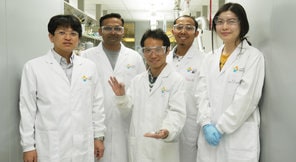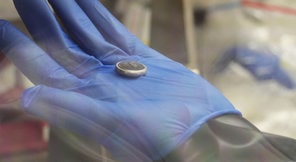Next Generation Flexible Rechargeable High Capacity Lithium Sulfur Battery
A novel, hybrid and flexible lithium sulfur battery with higher sulfur stability and enhanced capacity and voltage

Technology Summary
This KAUST technology demonstrates a hybrid lithium sulfur battery with exceptional capacity and remarkable energy density. It addresses the issue of lower sulfur utilization by its unprecedented layer protection, lower lithium diffusion and lower electrical resistance. It has a very high capacity rate and maintains stability for large number of cycles, including at high temperatures.
This technology is a potential game changer with its longer battery life, improved safety and price.
How It Works
The development of high-capacity rechargeable batteries has been pursued intensively during the past few decades, especially for portable electronic devices and electric vehicles.
Technology developed by Prof. Lance Li and his team at the KAUST 2D Materials Lab can revolutionize the rechargeable battery industry with significant improvements for energy capacity, cycle life, safety and cost. This invention also overcomes the problems of low sulfur utilization and severe capacity fading that have been associated with previous lithium sulfur batteries.
Why It Is Better
The technology developed uses high density sulfur to give the battery increased capacity to meet the needs of current applications.
In addition, sulfur, which is a byproduct of oil and gas processing, is widely available in Saudi Arabia. Sulfur is also recognized as a promising electrode material for next generation Li-S batteries owing to its high theoretical specific capacity. Technologies developed to date suffer from low sulfur utilization and severe capacity fading. The technology developed with Prof. Lance Li’s team helps in stabilizing the cathode and achieves 100 percent utilization of the sulfur. As a result, an advanced hybrid lithium sulfur battery with an exceptional capacity and impressive energy density is produced.
IP Protection
KAUST has several patents pending for this technology.
Invention Track Code
2014-080

Benefits
- High energy density
- Flexibility
- Longer cycle life
- Safety (less risk of fire)
- Environmentally friendly
- Stable

Applications
- Electronic devices
- Wearable and consumer devices
- Energy storage applications
